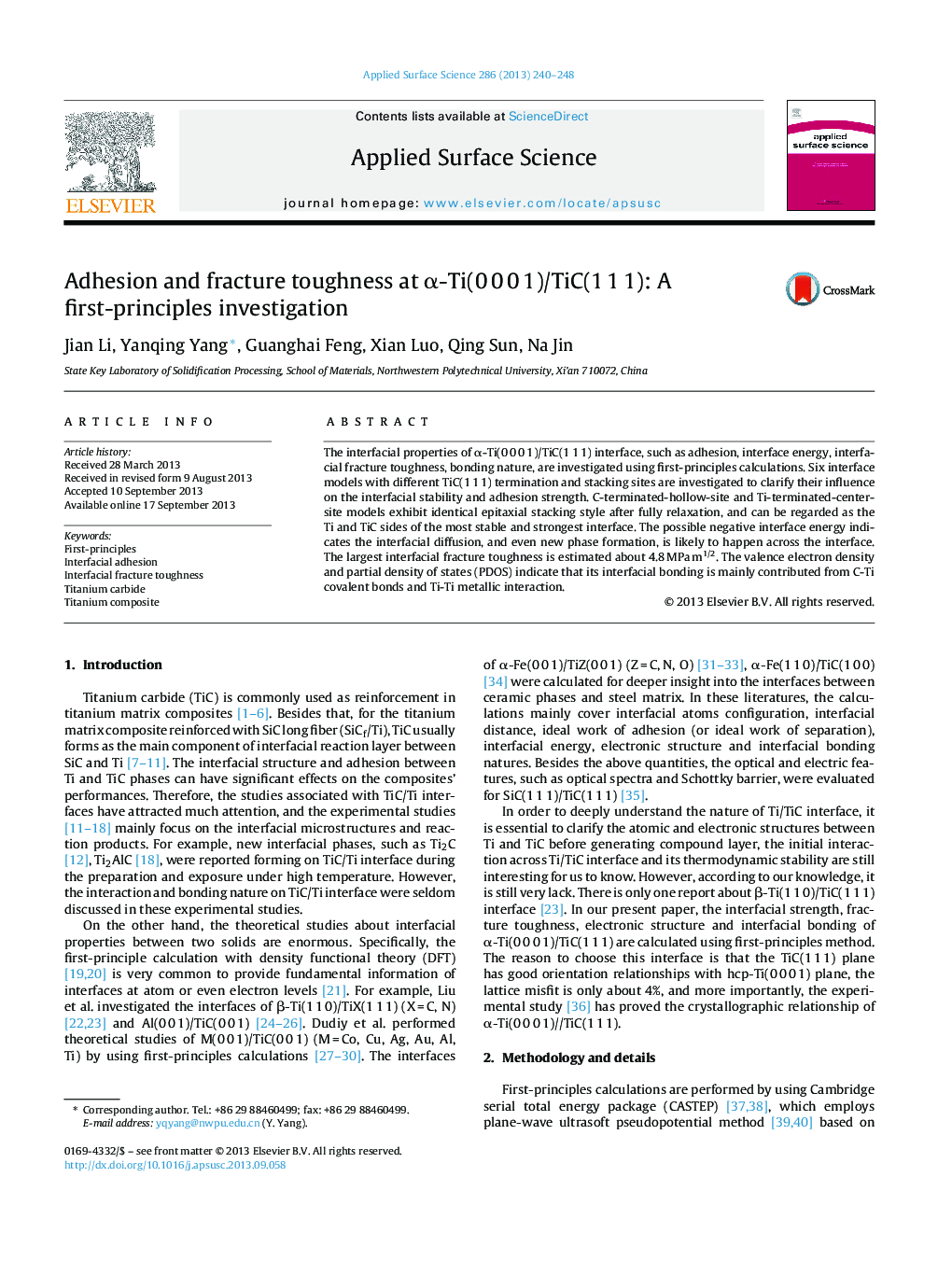| Article ID | Journal | Published Year | Pages | File Type |
|---|---|---|---|---|
| 5352101 | Applied Surface Science | 2013 | 9 Pages |
Abstract
The interfacial properties of α-Ti(0 0 0 1)/TiC(1 1 1) interface, such as adhesion, interface energy, interfacial fracture toughness, bonding nature, are investigated using first-principles calculations. Six interface models with different TiC(1 1 1) termination and stacking sites are investigated to clarify their influence on the interfacial stability and adhesion strength. C-terminated-hollow-site and Ti-terminated-center-site models exhibit identical epitaxial stacking style after fully relaxation, and can be regarded as the Ti and TiC sides of the most stable and strongest interface. The possible negative interface energy indicates the interfacial diffusion, and even new phase formation, is likely to happen across the interface. The largest interfacial fracture toughness is estimated about 4.8 MPa m1/2. The valence electron density and partial density of states (PDOS) indicate that its interfacial bonding is mainly contributed from C-Ti covalent bonds and Ti-Ti metallic interaction.
Keywords
Related Topics
Physical Sciences and Engineering
Chemistry
Physical and Theoretical Chemistry
Authors
Jian Li, Yanqing Yang, Guanghai Feng, Xian Luo, Qing Sun, Na Jin,
